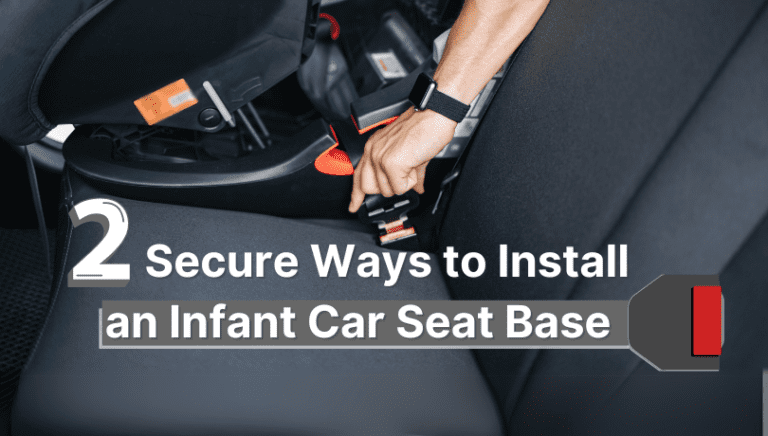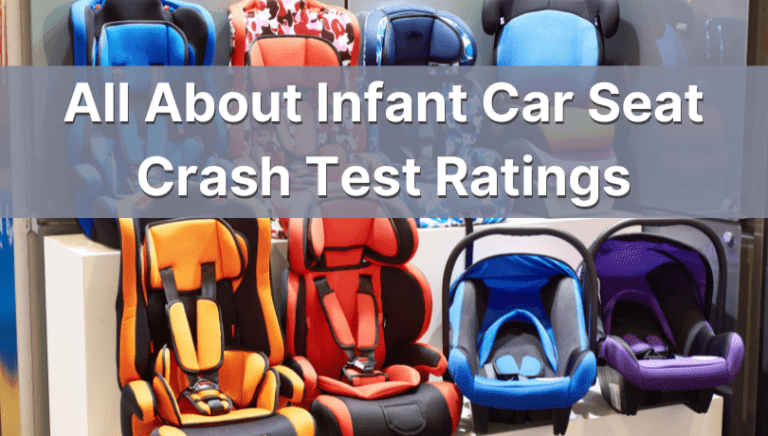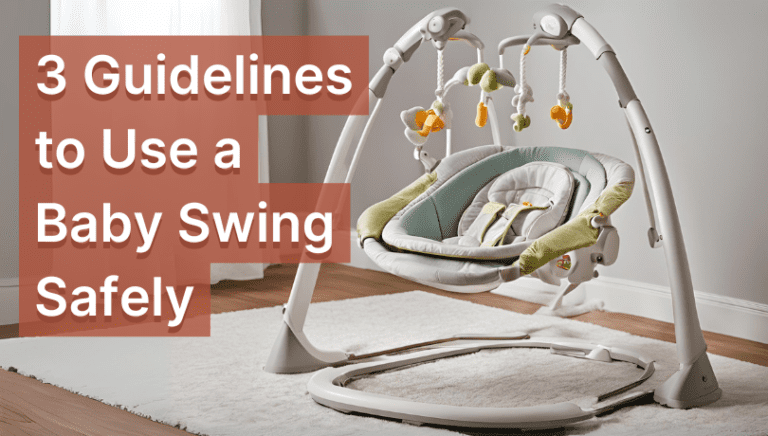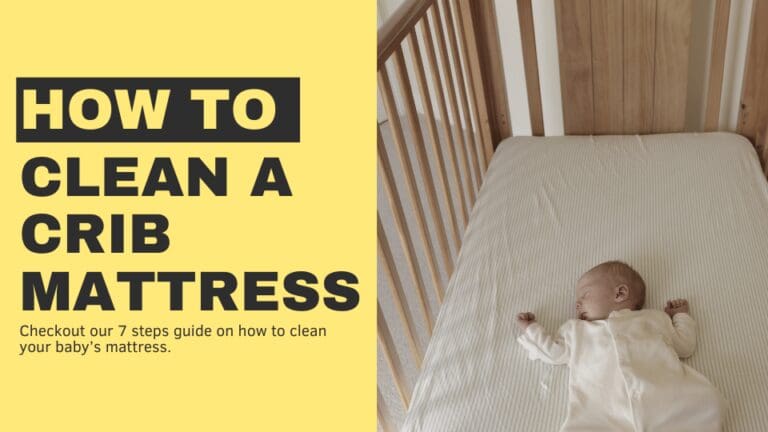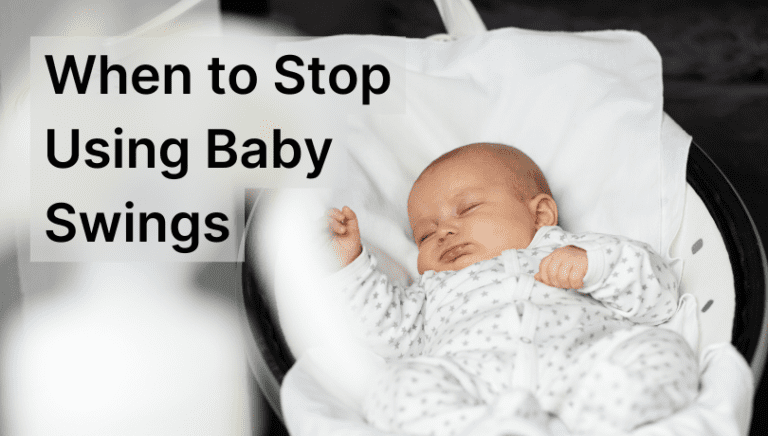Is It Worth Getting A Baby Swing: Complete Guide
When my husband and I prepared to welcome our firstborn, the list of baby essentials felt never-ending. So, at one point, we were forced to wonder if all these baby products were truly essential. That’s when I started thinking if it’s worth getting a baby swing, rocker, bouncer, and all the other baby containers.
And now after six kids, I have realized we can only label a few items as essential. Everything else is a choice. So, if you’re a new mom or a mom-to-be wondering if you really need a baby swing, let me see if I can help you.
Table of Contents
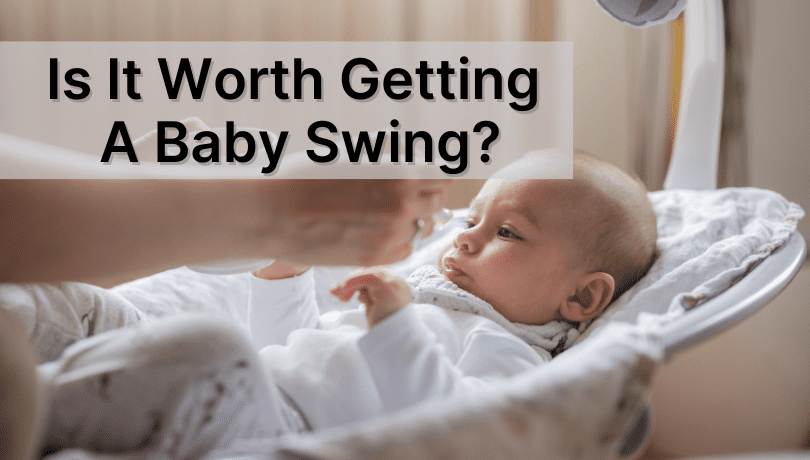
Is It Worth Getting a Baby Swing?
Dear new parents, you’re not alone!
Many experienced and first-time parents all wonder the same thing. Some choose not to invest in too many baby containers. But I think, in moderation, a baby swing is a wonderfully entertaining element for your little one.
Benefits and Purposes
1. Taking A Break From Contact Naps
A baby swing gives you a few minutes of respite after continuous spells of contact naps. My eldest son, Aiden, loved contact napping, and it soon got exhausting for me as Avery, my daughter, was only two years old at the time.

So, I’d put him in the swing when I needed to share my love and attention with Avery or do a quick chore.
2. Sense of Balance
Babies need to learn how their bodies should respond to their surroundings. It’s an aspect of effective vestibular growth that teaches them balance, coordination, and spatial awareness.
And the baby swings are the perfect place to encourage this development. As the swing sways back or forth or side-by-side, your baby explores how their body should adjust or respond to those movements.
3. Soothing a Colicky Baby
Being a mom to a colicky baby is difficult. Seeing them suffer breaks your heart too! One of my friends texted this recently –
“I’m going mad from lack of sleep! Baby just straight up refuses to sleep on any flat surface, so he’s been sleeping on my chest with me awake (or asleep while my partner watches over).”
That’s when a swing is helpful. Often, only the mechanical back-and-forth of an infant swing can calm your baby down. Hence, between the breaks from contact napping and crying, you can put your newborn in a swing and give yourself a well-deserved break. All you need to do is follow crucial baby swing safety tips to protect your baby.
What Are The Different Types Of Baby Swings?
Now that you’ve seen how a swing can help, you might be ready to invest in a baby swing. But which one do you get for your little one?
Here’s a checklist for before you buy a baby swing:
- Budget – Baby swings can be expensive, so opt for a model that transitions from infant to toddler to maximize utility. For example, electric cradles with swing features can accommodate children up to three years old.
- Space – Bigger models consume a lot of space. If you have space restraints, a portable model is best. You can also carry the swing from one room to another or the kitchen or bathroom.
- Need – I suggest waiting a few weeks before investing in a swing or rocker because they can be hit-or-miss with babies. My eldest son loved the swing, but my daughters, Fiona and Teagan, did not. Before purchasing a swing, let them experience different motions.
- Durability – Check the straps, the material, the frame, and the product’s durability. If you cannot visit a store to buy, research the models beforehand and ask for recommendations from experts, your pediatrician, and experienced parents.
Types of Swings
1. Cradle Swings

- Cradle swings often have timer options; for example, 15, 20, or 30 minutes.
- You can also adjust the height – a useful feature if you have pets or toddlers running around the house.
But you should also note:
- Full-size cradle swings are often as heavy as 13 to 15 lbs. Therefore, they are difficult to move and not portable at all. Please keep this in mind before you purchase one.
2. Portable Swings

- Portable swings, too, come with different music and swing settings.
- These are easily foldable and travel-friendly. You can store them in the back of your car during a road trip.
But you should also note:
- Babies may get too used to the swings and find it difficult to self-soothe or fall asleep anywhere else. So, please don’t use them for too long!
3. Electric Swings
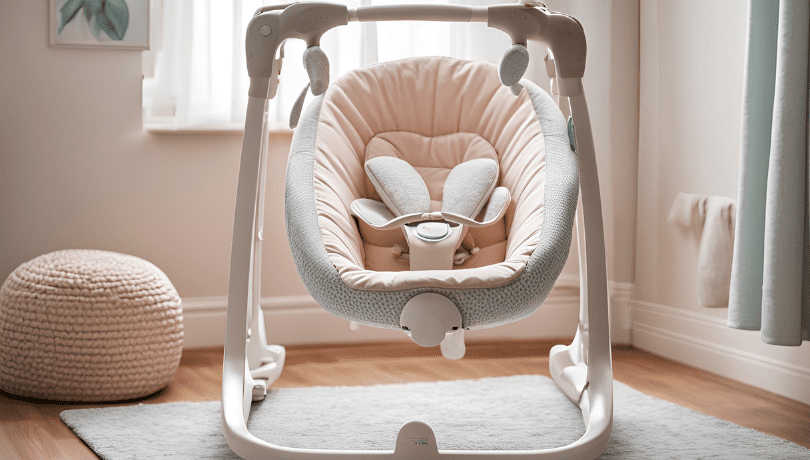
- Electric swings are automatic – choose the speed and motion setting and let your baby play in the swing.
- These can give your arms a much-needed break. You can keep an eye on your baby without having to manually push the swing.
But you should also note:
- Some babies dislike the mechanical back-and-forth motion of electric swings.
- Electric swings pose a heightened risk of skull injury and falls. Therefore, you must check the harness and strap your baby carefully.
Are Baby Swings Better Than Bouncers?
| Criteria | Baby Bouncer | Baby Swing |
| Age | Newborn to 6 months | – Newborn to 9 to 12 months – Models are available for up to 36 months |
| Weight | 6 to 20 lbs (depending on the model) | 6 to 30 lbs (depending on the model) |
| Price | Experts recommend to use until six months | You can use full-size swings for three years |
| Space | Bouncers consume less space | Full-size swings are heavier and consume more space |
| Portability | Bouncers are light and portable. Hence, you can supervise your baby easier | You can’t move most swings from one room to another. So, you need to stay next to them at all times. |
| Risks | Can cause SIDS or positional asphyxia if babies sleep in the bouncers | Flat-bottom cradle swings with firm mattresses reduce the risk of SIDS or positional asphyxia in babies |
| Benefits | – Needs less space, easy to store – Light and easy to carry – Park your baby and keep an eye on them | – Relief for colicky babies – Frees up your arms for quick breaks – Adds variety to your little one’s routine |
What Are The Cons of Baby Swings?
1. Getting Too Used to It
Since baby swings are so convenient, babies and parents get used to the swing far too much. It reduces your baby’s floor time, and they spend every waking moment in the swing.
So, to avoid this, follow a simple rule of thumb: let your babies spend substantially more time on the floor than on the swings.
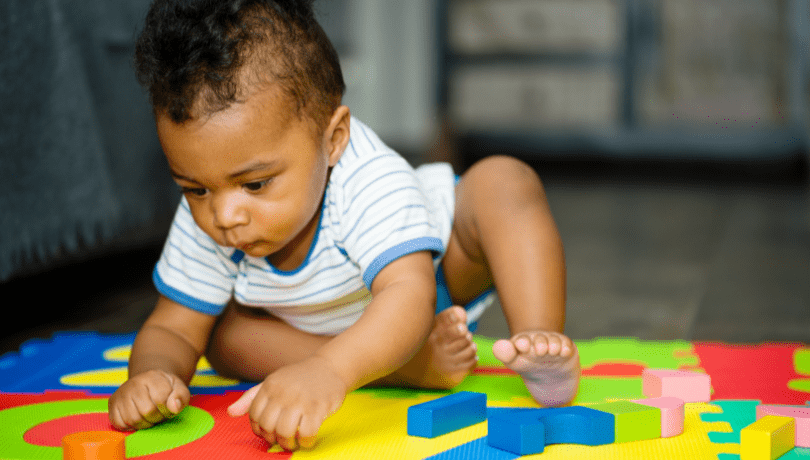
2. Safety
A baby swing isn’t ideal for every living situation. For instance, if you have pets or young kids who may try to paw at it or hang from the swing, it will topple the swing and harm the baby.
3. Flat Head Condition
Positional plagiocephaly or flat head is a significant concern that may happen when overusing the baby swing or any other baby container. If you keep your baby on their back for too long, the sides or back of their heads may get flat.
Is It OK for the Baby to Sleep in the Swing?
No, sleeping in swings is not OK!
Since babies don’t have adequate head and neck control, sleeping in the swings can lead to airway obstruction and breathing difficulties. How? Glad you asked.
- The lack of control indicates that their heads will slump forward once they’re asleep. It will obstruct the airflow between their nose, mouth, and lungs.
- It can lead to fatal complications such as positional asphyxia, SIDS, and accidental suffocation and strangulation in bed (ASSB).
Let the swing soothe and calm them down if you have a colicky baby like mine. Once they start falling asleep, quickly transfer them to their crib.
How to Use Baby Swings Safely?
Here are a few guidelines to maximize your baby’s safety while still allowing him to enjoy the swing:
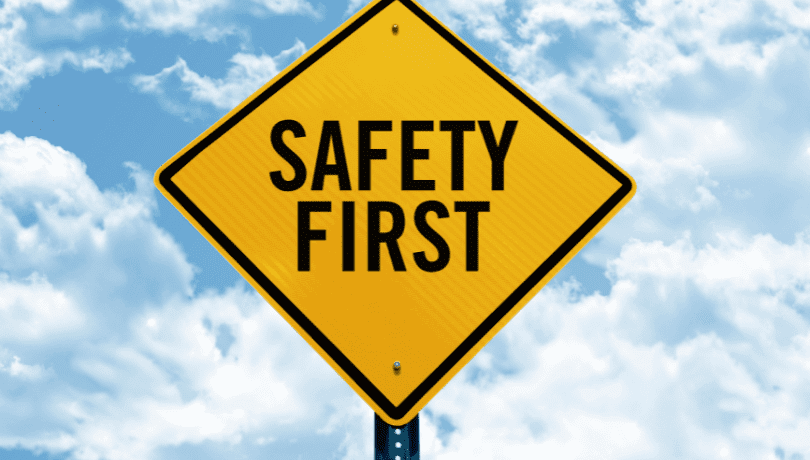
- Never leave your infant unattended in the swing, even if they are awake and alert. It’s best to carry or roll the swing in whatever room you’re in.
- Ensure that the swing is sturdy so it doesn’t tip over or fold, causing harm to your precious one.
- Other than the toys that come with the swing, don’t attach any additional toys. Also, ensure these toys don’t fall off to avoid choking or other safety hazards.
- If you’ve bought a brand-new swing, register it with the brand to get any recall updates. If you’re using a preloved one, keep an eye on the recall database to ensure it hasn’t been recalled.
Still curious about using a baby swing safely? Check out the blog below!
Recommended Article: How To Use A Baby Swing
My Recommendations for Baby Swings
- Doubles as a bouncer and a swing, and this model comes with a five-point harness.
- The reclining seat with head and neck support is ideal for a child younger than four months.
- It has six different motion settings for side-by-side and two-speed differentiations.
- Adapt this seat to your baby’s growth, as it can support up to thirty lbs.
Bright Starts Portable Automatic 6-Speed Baby Swing
- It has two different recline settings with a five-point harness for infants younger than 4 months.
- Ensures your baby’s head and neck safety with its removable support pillow.
- Ten distinct melodies and six motion settings to calm your crying baby down in a jiffy!
- There’s a toy bar attached to this swing that keeps your little one entertained for hours.
- It is a manual swing for those babies who don’t like the mechanical back-and-forth of electric swings.
- The Nuna Leaf can maintain momentum for 2 minutes with a gentle push.
Do Babies Need A Swing?
They don’t need a swing, but it definitely helps to have them. Babies only need your attention, love, and care. Anything else only adds to their experience and how they explore the world.
- Entertainment is the most obvious benefit of a swing. If your baby is too big for a bouncer, don’t fret! Most swings can support kids up to 9 to 12 months of age.
- The music feature soothes and calms your baby while also engaging their auditory senses. The toys or mobile attached to the swings help engage their vision and spatial awareness.
- Did you know that the first few months of your baby are affectionately called the fourth trimester? I didn’t either. Babies want to be constantly cuddled and wrapped tight for the first few months. It helps mimic the sensations of the womb. Hence, a swing is ideal to soothe and entertain the baby while you take a break.
So, even though your baby might not need a swing, having one can be extremely helpful. On that note, it also helps to know when to stop using baby swings based on age, weight limits, and development.
Do I Need To Get A Baby Swing?
For new or experienced parents, deciding which baby gear to buy is an enormous pressure. But over the years, I have realized that asking myself the following questions makes it easier.
1. Will I Have Help Caring For My Baby?
Mamas are superwomen, but even superwomen need their assistants. Do you have a set of extra hands around the house? If not, you can consider getting a swing.
2. Do I Have The Space?
A full-size or portable swing is considerably larger than a bouncer or jumper. If you don’t have the space to put it in the kitchen, bathroom, or wherever you go, it won’t be of much use.
3. Is My Little One Colicky?
Caring for a colicky or constantly crying baby is emotionally and physically exhausting. A swing can calm your baby down and give you a much-needed break.
4. Do I Have The Budget Or The Funds?
Swings are more expensive than other baby gear. And like I said before, baby swings can be a hit or a miss. Hence, before investing in an expensive swing, you can borrow one from a friend or family to see if your baby likes it.
5. Do I Have Other Young Children To Care For?
Rid yourself of any mom guilt over not being able to spend quality time with your older kids when caring for a newborn. Set your little one down in the swing and cuddle up with your older kid to make them feel loved and cared for.
Make The Most Of Your Baby’s Swing
From entertaining the little ones to comforting them during their colicky phase – swings are my and my babies’ best friend.
With a little bit of caution and a lot of research, select a swing that’s most convenient for you, whether an electric one, a portable one, or a full-size one. Under your watchful eyes, let the little one explore their world with music, toys, and more. However, please remember even though swings are great for them to play in, they’re not an ideal place to nap.
And to all the overwhelmed parents: Just read the user manual and stick to the safety guidelines, and your baby will have a healthy and happy time swinging and swaying!

